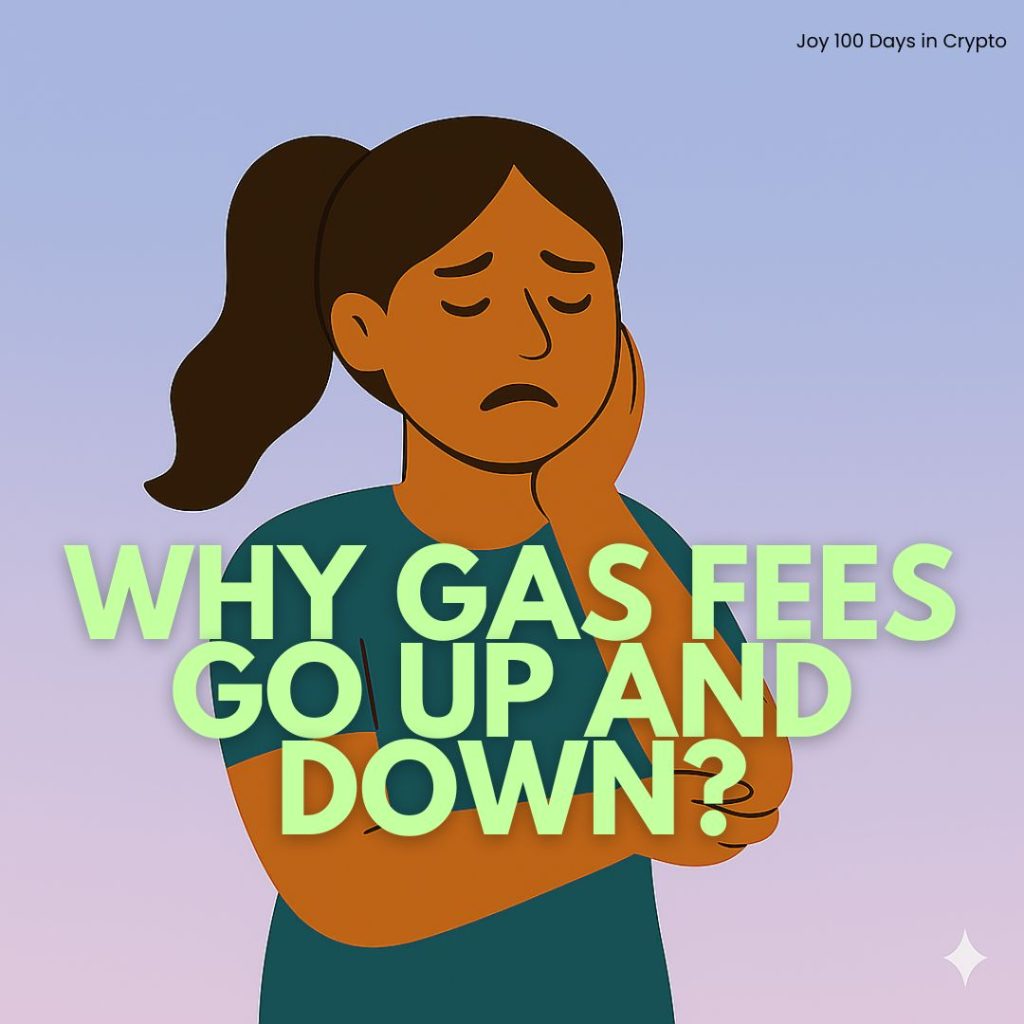By now, you know that every time you send crypto, swap tokens, or mint an NFT, you’re not just moving numbers on a screen. Back in Day 15, we talked about gas fees — those little charges you pay for using the blockchain’s network. And on Day 16, we broke down what you’re actually paying for: the network’s miners or validators to confirm your transactions.

But here’s the twist, gas fees don’t stay the same. One day they’re low, the next day they suddenly spike. Why? Let’s break it down.
Why Gas Fees Go Up and Down
Think of blockchain like booking a grab ride:
- Rush hour → When everyone’s booking at the same time, surge pricing kicks in. You pay more just to get a driver quickly.
- Off-peak hours → Fewer people are booking, so fares go back to normal (cheaper).
In crypto, it works the same way:
- Network demand: If thousands of people are trading tokens or minting NFTs at the same time, fees climb.
- Block space is limited: Every block can only hold a certain number of transactions, so people end up bidding higher fees to get their spot.
- Different chains, different rules: Ethereum may have high fees during peak times, while Solana or Polygon often stay cheaper because of their design.
How Not to Overpay
You don’t have to get stuck paying sky-high fees. Here are a few smart moves:
- Check gas trackers – Tools like Etherscan’s Gas Tracker show when fees are lowest.
- Time your transactions – Early mornings or weekends often mean less traffic on the blockchain highway.
- Use wallet settings wisely – On Day 10, we talked about hot and cold wallets. Most hot wallets (like MetaMask or Phantom) let you adjust gas fee preferences. Choose “slow” if you can wait, “fast” if you need it done now.
- Pick a different chain – Some blockchains are naturally cheaper. If your token exists on multiple networks, you can choose the one with lower fees.
Why This Matters
Gas fees aren’t just “extra charges.” They’re what keep the blockchain running smoothly, they pay the miners or validators who secure the network. And as we saw on Day 12, your wallet and seed phrase mean you control your assets. That also means you control when and how you spend, including choosing the best time to transact to save money.
✅ Takeaway: Gas fees are like Grab fares. They surge when everyone wants a ride at the same time and drop when it’s off-peak. The secret to saving? Time your ride wisely, and next time, we’ll meet the drivers behind the wheel (a.k.a. miners and validators).

Leave a Reply